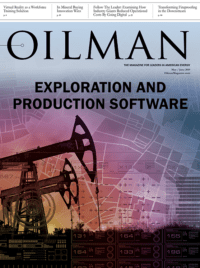Marked by intensified volatility due to continuous sharp oil price fluctuations, the oil market experienced its longest and deepest slump in 2014-2016. However, following the oil production cut deal, the prices recovered for a brief time and reached an all-time high in 2019. The oil production cut deal between OPEC and allies, including Russia, coming to an end in June 2019 and the uncertainty about oil prices has spiked multi-fold. Achieving stability in the oil market is imperative; it does not come without challenges.
Many practitioners, academicians, and policymakers conducted scalable studies to examine the underlying economic and geopolitical factors of oil price dynamics. The critical determinants of the cyclical behavior of oil markets are supply and demand, global real money stocks, inventories, activities of financial investors in the oil futures market, developments in financial markets, geopolitical crisis, and interest rates.
The resilience of the oil-rich economies to the oil crisis varied with the economic fundamentals. Countries that have a more fiscal policy, higher foreign currency liquidity buffers, diversified export base, flexible exchange rate regime respond better to oil shocks and have lowered exposure to oil price fluctuations.
Apart from these factors, technological advances emerged not less significant than the economic fundamentals impacting the response to oil shocks. Shale oil technology, a combo of hydraulic fracturing and horizontal drilling technology coupled with large-scale viable commercial exploitation in crucial basins, such as the Permian and Appalachian, have propelled the overall unrivaled crude oil and LNG production in the United States to over 11 million barrels (bbls) per day and over 100 billion cubic feet per day, respectively.
Using advanced exploration and extraction, the shale industry achieves higher efficiency gains and are capable of break even at low crude prices. The recent bids of Chevron and Occidental to acquire Anadarko are driven by the potential of Shale to yield higher profits even at a lower price of crude oil. Such a phenomenon involving a giant corporation acquiring small companies using advanced technologies also generates significant M&A deal opportunities in the upstream sector, and there can be a surge in transformative acquisitions in 2019. Moreover, shale oil has an enormous potential to drive a significant increase in supply over the next decade owing to rapidly declining costs of extraction and potential for discovering new fields. Companies relying on more modern technologies such as microwave fracking, drilling pads coupled with Automatic Robotic Drilling can drive down costs of a barrel produced and boost profit margins amid an oil crisis.
In addition to new oil and gas production technology, blockchain technology also has tremendous potential to mitigate the adverse effect of price fluctuations. Blockchain, the foundation of cryptocurrency Bitcoin, is a ledger capability providing an indispensable solution to trade and settlement inefficiencies and reduce the risk of fraud while enabling full end to end visibility in that business network.
Blockchain has several use cases in the oil and gas industry, and many companies have viewed this as an opportunity to transform the business and navigate the complex landscape. Blockchain users including Chevron, BP, Equinor, Reliance an Indian oil and gas company, Total a French oil and gas company joined together to establish the Vakt, a digital transaction platform backed by JP Morgan’s quorum.
The oil and gas supply chain is byzantine as it includes participants from different global locations and under complex regulations. As multiple suppliers participate in such a complex chain, various linkages in the supply chain become sources of origination and escalation of risks rendering most of the business transactions inefficient, costly and vulnerable to errors.
The benefit of this technology is unparalleled as it mitigates the risks and drives high business profitability by reducing cash conversion cycle, overhead and a number of cost intermediaries. Using smart contracts, digital certifications and digital compliance the blockchain technology brings about expeditious transactions in a trusted mode.
These technological advances enabling low costs of production and drilling, as well as expeditious transactions with minimal errors and enhanced transparency will facilitate the companies to overcome any future oil price shocks, while maintaining high-profit margins and reducing the downward pressure on the economy.
Amandeep Kaur works as a Financial Accounting professional at ScanOleum an oil and gas startup company focused on Oil and Gas trading, Drilling Services and Marketing Oil and Gas equipment. She dedicates a significant time in monitoring Oil and Gas markets, identifying opportunities as well as managing risks and compliance. She has a keen interest in writing about Oil Markets, M&A activities in the Oil Industry, and Advanced Technologies to help oil and gas businesses. She has an MBA in Finance and Marketing from the University of Delaware.








